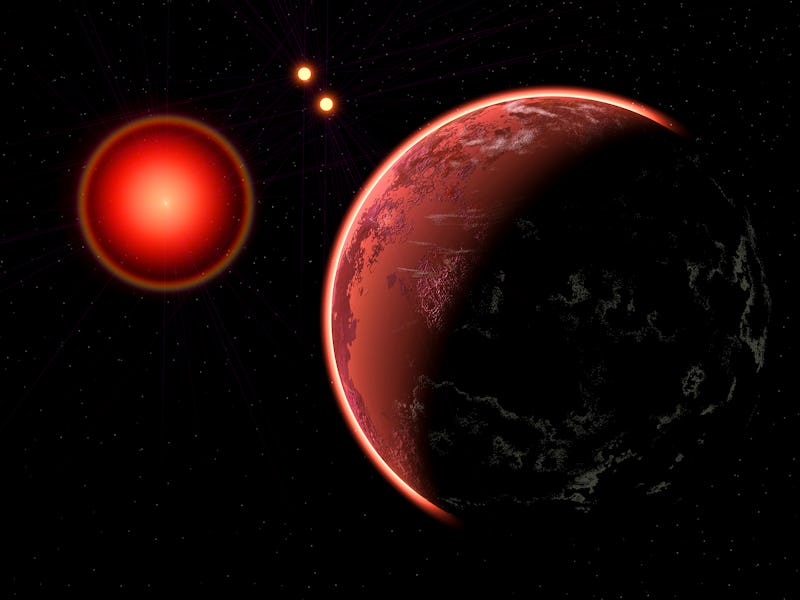New star maps could dash hopes of finding life on the nearest exoplanet to Earth
The nearest star to Earth, Proxima Centauri, hosts a small rocky world in the habitable zone of that star.

The nearest known exoplanet to Earth, a planet orbiting Proxima Centauri, experiences some pretty nasty space weather from its parent star. But previous work on the space weather of Proxima relied on a lot of assumptions. The bad news is that new research has confirmed the grim picture.
The nearest star to Earth, Proxima Centauri, hosts a small rocky world in the habitable zone of that star. The habitable zone is important because that’s the region that astronomers believe is where a planet can potentially host liquid water — too close to a star and the intense radiation will simply boil away any water; too far from a star and the planet won’t receive enough warmth, and all of its water will just turn to ice.
Astronomers are very interested in habitable zones around stars because that’s where life as we know it has the best chance of appearing. So it’s no wonder that astronomers are incredibly interested in Proxima Centauri b, the name we give to our nearest known exoplanet.
Unfortunately, any life that may call that planet home they’re going to have a rough time of it. Proxima Centauri is a red dwarf star with only a fraction of the mass of the Sun. Because of their small sizes, the nuclear fusion cores of red dwarf stars are much closer to their surfaces. This makes their surfaces much more chaotic than stars like the Sun, and that increased turbulence amplifies incredibly strong magnetic fields.
In turn, those strong magnetic fields can launch extremely strong blasts of high-energy radiation and particles into the surrounding system. At far enough distances away from a star, this isn’t a big deal. But because stars like Proxima Centauri aren’t nearly as luminous as the Sun, their habitable zones are much closer. Close enough that “habitable” might be too generous of a word.
Even though astronomers already had a sense that life on Proxima b would be very difficult, they didn’t know the exact magnetic field situation around Proxima Centauri and instead had to rely on observations of similar stars.
A new study used high-resolution maps of the magnetic field of Proxima Centauri to develop a model of the solar wind emanating from that star. They found that with more accurate information, the situation is just as grim as we had thought. All told, Proxima b receives about 1,000 times more solar wind radiation than the Earth does.
This would make it extremely difficult for the planet to host an atmosphere, let alone liquid water. While it doesn’t completely rule out the possibility of life in that world, it does mean that any life that gained a foothold there has a much harder time than us.
This article was originally published on Universe Today by PAUL M. SUTTER. Read the original article here.